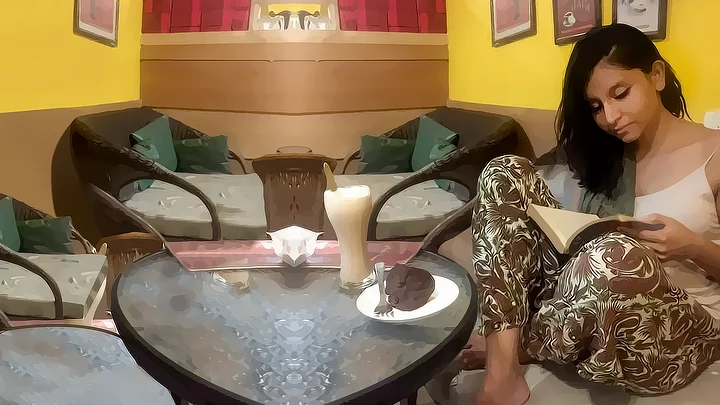There’s something inarguably exquisite about sitting in a café and allowing the world to pass you by. Your fingers traipse across the paper (or the keys of a laptop) and you will – occasionally – reach out for a spiced chai latte or a bran muffin.
I’ve been sitting in cafes and doing a major amount of my reading and writing for close to a decade now. No matter what café I’m frequenting at the time, I always get around to trying the latest thing on their menu (and quickly go back to the originals). I also protectively thumb down the top corner of a page of a book I’ve found there (monster, I know) and hide it behind three others, so I can pick up where I left off, the next time I’m there.
I’ve actually gone back to a café I used to haunt in Majnu Ka Tila, north Delhi, during my college days and found the book I was reading a year back. The page still bore traces of having been paused at Vernon Dursley.
Hemingway to JK Rowling: A Glorious Café Culture
The idea of a café as a literary haunt isn’t new. Literary cafes have existed for centuries. Hemingway and Brecht were Parisian café regulars, guzzling beer and typing up reams of pages. Hemingway even penned a yodel of sorts to the café he most loved and frequented, in his book The Sun Also Rises, writing – “No matter what cafe in Montparnasse you ask a taxi-driver to bring you to from the right bank of the river, they always take you to the Rotonde.” The Rotonde, incidentally, was also the go-to place for F Scott Fitzgerald and TS Eliot. (Can you not imagine afternoon teas slipping seamlessly into nocturnal cocktails as these men sat about, penning the next great novel?)
The ‘literary café’ era wasn’t a shooting star that blazed out after the 20s. More recently, a rather beloved children’s book author called JK Rowling sat at one of these – her daughter’s pram held by one hand, her other hand drafting several chapters of her first Harry Potter book.
JK Rowling – ‘poor as a church mouse’ at the time, by her own admission – would nonetheless find incredible solace in the warmth of the squiggles she’d belt out on her trusty typewriter, back in the early 90s. The Elephant House in Edinburgh – and the back room that Ms Rowling would frequent and look out of, as she wrote – are now literary icons!
Closer home, are the Coffee Houses of our many metropolitans – each having served as a hub for some major cultural/political renaissance of our times. My childhood trips to the congested lanes of College Street would always be punctuated by my father and mother pointing out the old establishment and launching a monologue on how Mrinal Sen/Satyajit Ray/Sunil Gangopadhyay could frequently be seen on a windy Saturday afternoon, wolfing down a shingara.
Why the Book and Café Love Story Isn’t Going Anywhere
I don’t believe the literary café ever died. Yes, the Fitzgeralds and the Hemingways of the world went laughing into the sunset having created more than a masterpiece each; the manual typewriter’s clunky keys were replaced by the smooth Control+V-ing of laptops and coffee houses were no longer the only place you could do some ‘good writing’ and call it your ivory tower.
It’s probably a good thing there’s no ivory tower any longer, because really, our definition of a ‘writer’ has expanded far beyond novels and newspaper articles. You could sit and pen pretty much anything, rake up a college reunion and eat your tikkas with your croissants.
Perhaps the next time you’re feeling out of sorts, you’ll try the café closest to you for size.
It needn’t be the Rotonde or even the Coffee House. Some of my best doodling and snoozing happen at the neighbourhood CCD. You’ll just need to find your corner.
(At The Quint, we question everything. Play an active role in shaping our journalism by becoming a member today.)
